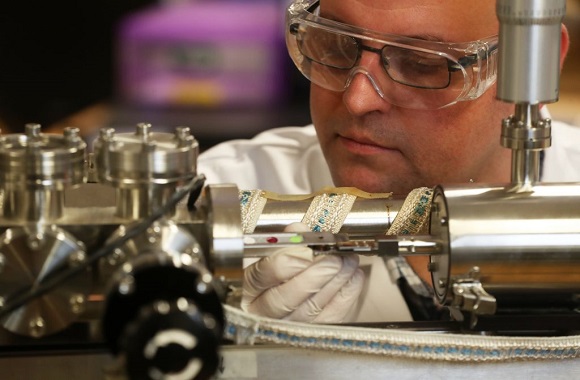A new microscopy system that will help researchers understand the minute detail of surface science is being installed at Cardiff University’s state-of-the-art Translational Research Hub (TRH).
The Photo induced Force Microscopy (PiFM) system – the first of its kind in the UK – will arrive in April. The installation has been made possible thanks to an £1m EPSRC Strategic Equipment Bid led by Professor Philip Davies, from Cardiff Catalysis Institute, supported by Dr Wayne Nishio Ayre and a multidisciplinary team.
PiFM provides an infrared spectrum whilst simultaneously recording the topography of a surface at resolutions of less than 10 nm.
The system allows molecular identification of surfaces to be achieved at the nanoscale, whilst capturing topography and force data simultaneously, similar to atomic force microscopy, but combined with powerful infrared spectroscopy for chemical characterisation.

Professor Phil Davies said:
We are a consortium of research scientists with interests that span a great deal of EPSRC’s remit. We are working to create a facility for Photo induced Force Microscopy (PiFM) in Cardiff University that will be available for academics and industrial researchers around the UK.
The forthcoming installation has the potential to advance our understanding in every field in which an interface plays a role, from polymers to biofilms and from biomineralization to catalysts.
PiFM was developed by Molecular Vista and adds the analytical power of vibrational spectroscopy to the sophisticated topographical information of atomic force microscopy (AFM).
Professor Davies added:
The consortium of researchers that put together the bid is multidisciplinary in nature. PiFM offers new insight into many fields, allowing us to create a UK-first facility accessible to the whole scientific community.
Cardiff Catalysis Institute and the ERDF-funded Institute for Compound Semiconductors will move to TRH this summer. The Hub will foster partnerships with national and international enterprises to promote academic-to-business, and business-to-business relationships and fuel economic growth in Wales and beyond.
The microscopy wing of the TRH has been designed to be vibrationally isolated form the rest of the building and the surrounding area to ensure nanoscale imaging for both the electron microscopes and the PIFM.
The installation of NEXUS optical tables with active isolation legs from ThorLabs (pictured) will ensure the maximum performance of the vibrational microscopy laboratory.
For further information on working with Cardiff Catalysis Institute, or PiFM, contact Professor Phil Davies [email protected] or [email protected]




